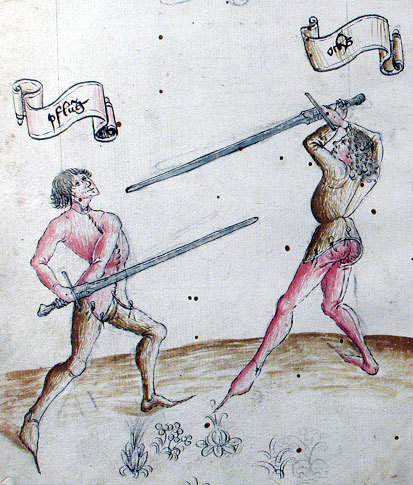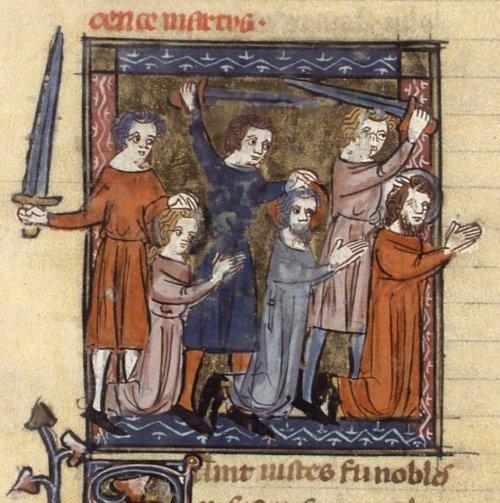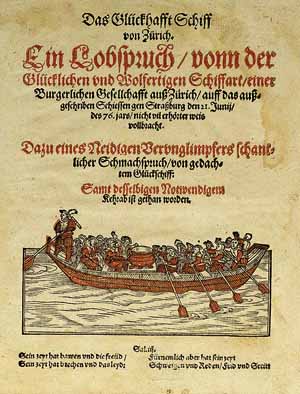|
Federfechter
The ''Freifechter'' or ''Federfechter'' (''Freifechter von der Feder zum Greifenfels'') were a fencing guild founded around 1570 in Prague. They were known, from early in their existence, to be skilled, rivalling the Marx brothers who for the best part of a century had held a monopoly. In 1575 they were admitted by the council of Frankfurt in spite of the Marx brothers's protests, and on 7 March 1607, they were officially recognised by Rudolf II, although they had been acknowledged to be equally capable long before. While ''Freifechter'' means "free fencer" (c.f. "free lancer"), the reference to "feather" (''Feder'') in the full name of the guild is unclear, though it is believed that it was derived from the name of Saint Vitus, who is often depicted with a feather. In their '' Deutsches Wörterbuch'', the Brothers Grimm hold it plausible that it derives from the custom of pinning feathers to one's hat or lance, but the coat of arms accorded to the brotherhood by Rudolf II displays ... [...More Info...] [...Related Items...] OR: [Wikipedia] [Google] [Baidu] |
German School Of Swordsmanship
The German school of fencing (') is a system of combat taught in the Holy Roman Empire during the Late Middle Ages, Late Medieval, German Renaissance, and Early Modern periods. It is described in the contemporary Fechtbuch, Fechtbücher ("fencing books") written at the time. The geographical center of this tradition was in what is now Southern Germany including Augsburg, Frankfurt, and Nuremberg. During the period in which it was taught, it was known as the ', or the ''"Art of Fighting"''. The German school of fencing focuses primarily on the use of the two-handed longsword; it also describes the use of many other weapons, including polearms, medieval daggers, Messer (weapon), messers (with or without a buckler), and the stick fighting, staff, as well as describing mounted combat and unarmed grappling (''ringen''). Most authors of writings on the system are, or claim to be, in the tradition of the 14th-century master Johannes Liechtenauer. The earliest surviving treatise on Li ... [...More Info...] [...Related Items...] OR: [Wikipedia] [Google] [Baidu] |
Marx Brothers (fencing)
The Brotherhood of Saint Mark (german: Marxbrüder, Marx brothers) was the name of the most important organization of German swordsmen in the 16th century. History The brotherhood originated in the 15th century, but it is not known when exactly it was founded. Hans Talhoffer may have been an early member, or even one of the founders (the lion of St Mark appears in his coat of arms in a manuscript of 1459). The earliest certain attestation dates to 1474. The group held an annual meeting in Frankfurt, where they elected their captain (''Hauptmann''). In 1487, Frederick III granted them the monopoly on the title "master of the long sword" (''Meister des langen Schwerts''), effectively making them a fencers' guild. This title was relevant for the Landsknechts, because a certified "master of the long sword" wielding the Zweihänder was entitled to twice the pay of a normal soldier (Doppelsöldner). The earliest reference to the brotherhood calls them the brotherhood of Our dear l ... [...More Info...] [...Related Items...] OR: [Wikipedia] [Google] [Baidu] |
Marxbruder
The Brotherhood of Saint Mark (german: Marxbrüder, Marx brothers) was the name of the most important organization of German swordsmen in the 16th century. History The brotherhood originated in the 15th century, but it is not known when exactly it was founded. Hans Talhoffer may have been an early member, or even one of the founders (the lion of St Mark appears in his coat of arms in a manuscript of 1459). The earliest certain attestation dates to 1474. The group held an annual meeting in Frankfurt, where they elected their captain (''Hauptmann''). In 1487, Frederick III granted them the monopoly on the title "master of the long sword" (''Meister des langen Schwerts''), effectively making them a fencers' guild. This title was relevant for the Landsknechts, because a certified "master of the long sword" wielding the Zweihänder was entitled to twice the pay of a normal soldier (Doppelsöldner). The earliest reference to the brotherhood calls them the brotherhood of Our dear l ... [...More Info...] [...Related Items...] OR: [Wikipedia] [Google] [Baidu] |
Fechtfeder
The ''Feder'' (plural ''Federn''; also ''Fechtfeder'', plural ''Fechtfedern''), is a type of training sword used in '' Fechtschulen'' (fencing schools) of the German Renaissance. The type has existed since at least the 15th century, but it came to be widely used as a standard training weapon only in the 16th century (when longsword fencing had ceased to have a serious aspect of duelling, as duels were now fought with the rapier), shown extensively in the fighting manuals of the time, particularly those of Paulus Hector Mair and Joachim Meyer, and it remained in use in such ''Fechtschulen'' well into the 17th, and in some cases for much of the 18th century. The origin of the term "Feder" for these swords is uncertain. The German word ''Feder'' means "feather" or "quill", but came to be used of metal springs in the 17th century (i.e. at about the same time as the name of the sparring weapon and possibly influenced by it). The term ''Fechtfeder'' itself seems to be connected to th ... [...More Info...] [...Related Items...] OR: [Wikipedia] [Google] [Baidu] |
Historical European Martial Arts
Historical European martial arts (HEMA) are martial arts of European origin, particularly using arts formerly practised, but having since died out or evolved into very different forms. While there is limited surviving documentation of the martial arts of classical antiquity (such as Greek wrestling or gladiatorial combat), surviving dedicated technical treatises or martial arts manuals date to the Late Middle Ages and the early modern period. For this reason, the focus of HEMA is ''de facto'' on the period of the half-millennium of ca. 1300 to 1800, with a German and an Italian school flowering in the Late Middle Ages and the Renaissance (14th to 16th centuries), followed by Spanish, Portuguese, French, English, and Scottish schools of fencing in the modern period (17th and 18th centuries). Arts of the 19th century such as classical fencing, and even early hybrid styles such as Bartitsu, may also be included in the term HEMA in a wider sense, as may traditional or folkloristi ... [...More Info...] [...Related Items...] OR: [Wikipedia] [Google] [Baidu] |
Prague
Prague ( ; cs, Praha ; german: Prag, ; la, Praga) is the capital and largest city in the Czech Republic, and the historical capital of Bohemia. On the Vltava river, Prague is home to about 1.3 million people. The city has a temperate oceanic climate, with relatively warm summers and chilly winters. Prague is a political, cultural, and economic hub of central Europe, with a rich history and Romanesque, Gothic, Renaissance and Baroque architectures. It was the capital of the Kingdom of Bohemia and residence of several Holy Roman Emperors, most notably Charles IV (r. 1346–1378). It was an important city to the Habsburg monarchy and Austro-Hungarian Empire. The city played major roles in the Bohemian and the Protestant Reformations, the Thirty Years' War and in 20th-century history as the capital of Czechoslovakia between the World Wars and the post-war Communist era. Prague is home to a number of well-known cultural attractions, many of which survived the ... [...More Info...] [...Related Items...] OR: [Wikipedia] [Google] [Baidu] |
Frankfurt
Frankfurt, officially Frankfurt am Main (; Hessian: , "Frank ford on the Main"), is the most populous city in the German state of Hesse. Its 791,000 inhabitants as of 2022 make it the fifth-most populous city in Germany. Located on its namesake Main River, it forms a continuous conurbation with the neighboring city of Offenbach am Main and its urban area has a population of over 2.3 million. The city is the heart of the larger Rhine-Main metropolitan region, which has a population of more than 5.6 million and is Germany's second-largest metropolitan region after the Rhine-Ruhr region. Frankfurt's central business district, the Bankenviertel, lies about northwest of the geographic center of the EU at Gadheim, Lower Franconia. Like France and Franconia, the city is named after the Franks. Frankfurt is the largest city in the Rhine Franconian dialect area. Frankfurt was a city state, the Free City of Frankfurt, for nearly five centuries, and was one of the most import ... [...More Info...] [...Related Items...] OR: [Wikipedia] [Google] [Baidu] |
Rudolf II, Holy Roman Emperor
Rudolf II (18 July 1552 – 20 January 1612) was Holy Roman Emperor (1576–1612), King of Hungary and Croatia (as Rudolf I, 1572–1608), King of Bohemia (1575–1608/1611) and Archduke of Austria (1576–1608). He was a member of the House of Habsburg. Rudolf's legacy has traditionally been viewed in three ways:Hotson, 1999. an ineffectual ruler whose mistakes led directly to the Thirty Years' War; a great and influential patron of Northern Mannerist art; and an intellectual devotee of occult arts and learning which helped seed what would be called the Scientific Revolution. Determined to unify Christendom, he initiated the Long Turkish War (1593–1606) with the Ottoman Empire. Exhausted by war, his citizens in Hungary revolted in the Bocskai Uprising, which led to more authority given to his brother Matthias. Under his reign, there was a policy of toleration towards Judaism. Early life Rudolf was born in Vienna on 18 July 1552. He was the eldest son and successor of ... [...More Info...] [...Related Items...] OR: [Wikipedia] [Google] [Baidu] |
Saint Vitus
Vitus (), whose name is sometimes rendered Guy or Guido, was a Christian martyr from Sicily. His surviving hagiography is pure legend. The dates of his actual life are unknown.Basil Watkins, ''The Book of Saints: A Comprehensive Biographical Dictionary'', 8th rev. ed. (Bloomsbury, 2016), p. 758.Donald Attwater, ''The Avenel Dictionary of Saints'' (Avenel Books, 1981), p. 338. He has for long been tied to the Sicilian martyrs Modestus and Crescentia but in the earliest sources it is clear that these were originally different traditions that later became combined.David Hugh Farmer, ''The Oxford Dictionary of Saints'', 5th rev. ed. (Oxford University Press, 2011), s.v. "Vitus (Guy), Modestus, and Crescentia". The figures of Modestus and Crescentia are probably fictitious. According to his legend, he died during the Diocletianic Persecution in AD 303. In the Middle Ages, he was counted as one of the Fourteen Holy Helpers. In Germany, his feast was celebrated with dancing before his ... [...More Info...] [...Related Items...] OR: [Wikipedia] [Google] [Baidu] |
Deutsches Wörterbuch
The ''Deutsches Wörterbuch'' (; "The German Dictionary"), abbreviated ''DWB'', is the largest and most comprehensive dictionary of the German language in existence.Synopsis of the ''Deutsches Wörterbuch'' at the Language Research Centre, Berlin-Brandenburg Academy of Sciences and Humanities, retrieved 27 June 2012.Clifford Wunderlich ''Deutsches Wörterbuch von Jacob und Wilhelm Grimm'' , Andover-Harvard Theological Library, Harvard University Divinity School, April 2012. retrieved 27 June 2012. Encompassing modern |
Brothers Grimm
The Brothers Grimm ( or ), Jacob (1785–1863) and Wilhelm (1786–1859), were a brother duo of German academics, philologists, cultural researchers, lexicographers, and authors who together collected and published folklore. They are among the best-known storytellers of folk tales, popularizing stories such as "Cinderella" ("), "The Frog Prince" (""), "Hansel and Gretel" ("), "Little Red Riding Hood" (""), "Rapunzel", "Rumpelstiltskin" (""), "Sleeping Beauty" (""), and "Snow White" (""). Their first collection of folk tales, ''Children's and Household Tales'' (), began publication in 1812. The Brothers Grimm spent their formative years in the town of Hanau in the Landgraviate of Hesse-Kassel. Their father's death in 1796 (when Jacob was eleven and Wilhelm was ten) caused great poverty for the family and affected the brothers many years after. Both brothers attended the University of Marburg, where they developed a curiosity about German folklore, which grew into a lifelong de ... [...More Info...] [...Related Items...] OR: [Wikipedia] [Google] [Baidu] |
Johann Fischart
Johann Baptist Fischart (c. 1545 – 1591) was a German satirist and publicist. Biography Fischart was born, probably, at Strasbourg (but according to some accounts at Mainz), in or about the year 1545, and was educated at Worms in the house of Kaspar Scheid, whom in the preface to his ''Eulenspiegel'' he mentions as his cousin and preceptor. He appears to have travelled in Italy, the Netherlands, France and England, and on his return to have taken the degree of ''doctor juris'' at Basel. Most of his works were written from 1575 to 1581. During this period, he lived with, and was probably associated in the business of, his sister's husband, Bernhard Jobin, a printer at Strasbourg who published many of his books. In 1581 Fischart was attached as advocate to the Reichskammergericht (imperial court of appeal) at Speyer. In 1583, he married and was appointed ''Amtmann'' (magistrate) at Forbach near Saarbrücken. He died there in the winter of 1590–1591. Influence Thirty years aft ... [...More Info...] [...Related Items...] OR: [Wikipedia] [Google] [Baidu] |

_1r.jpg)





